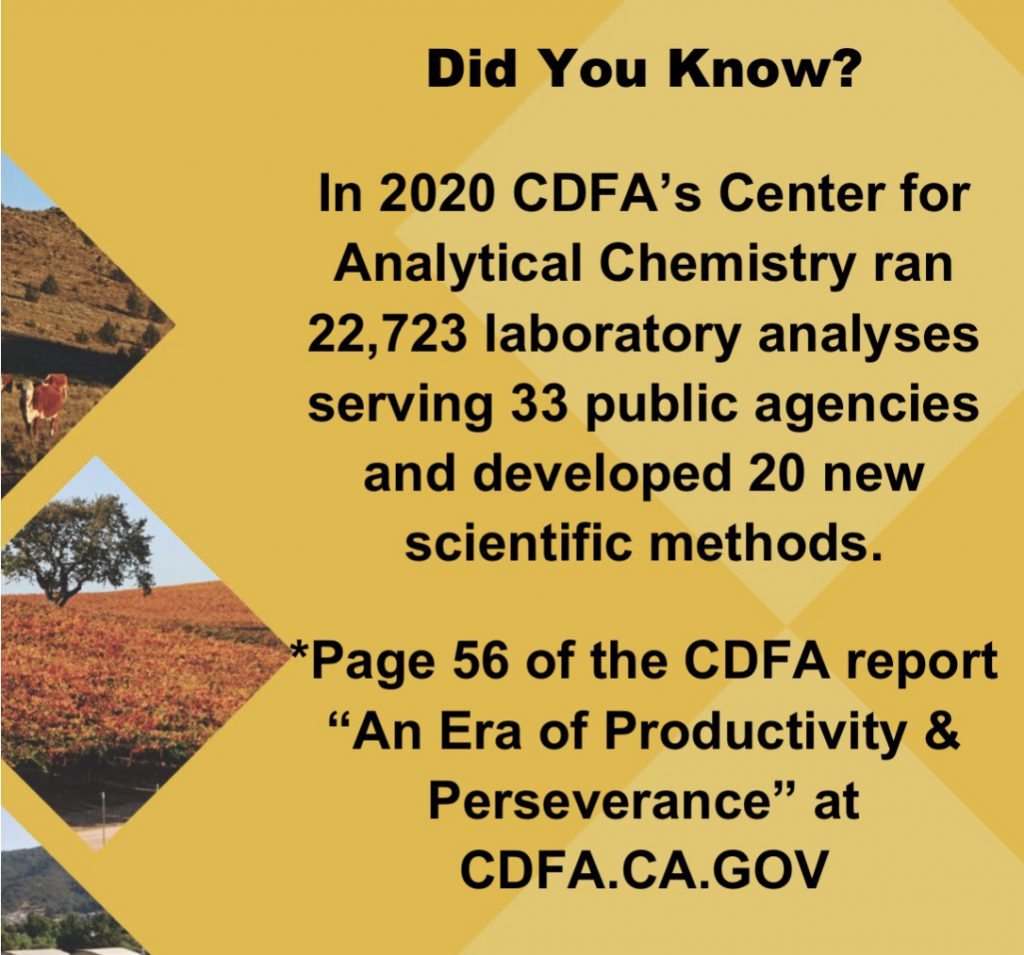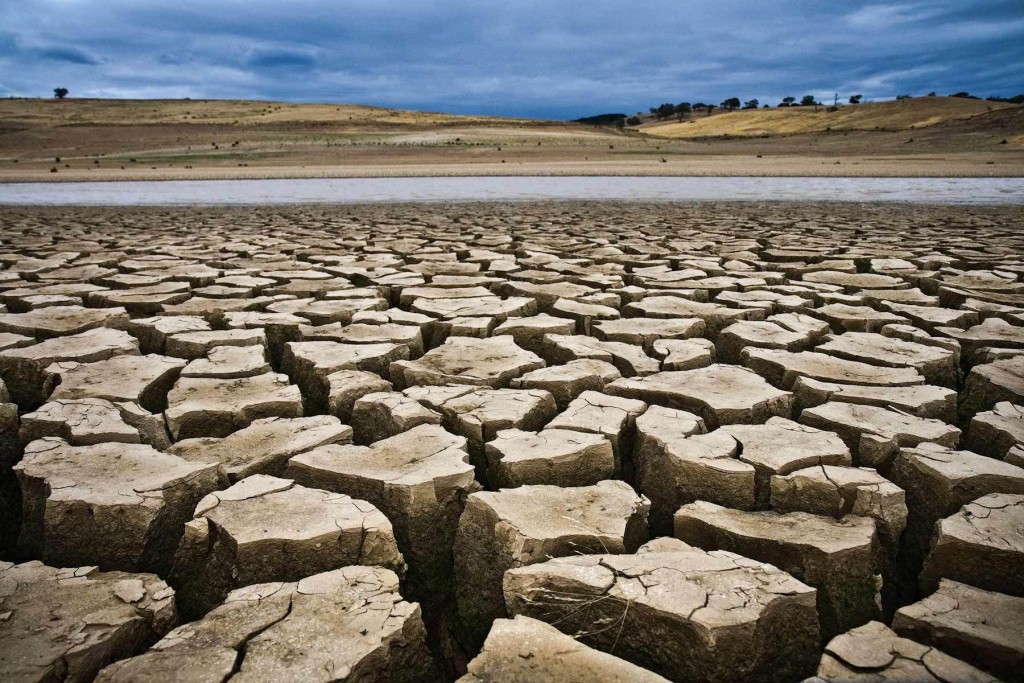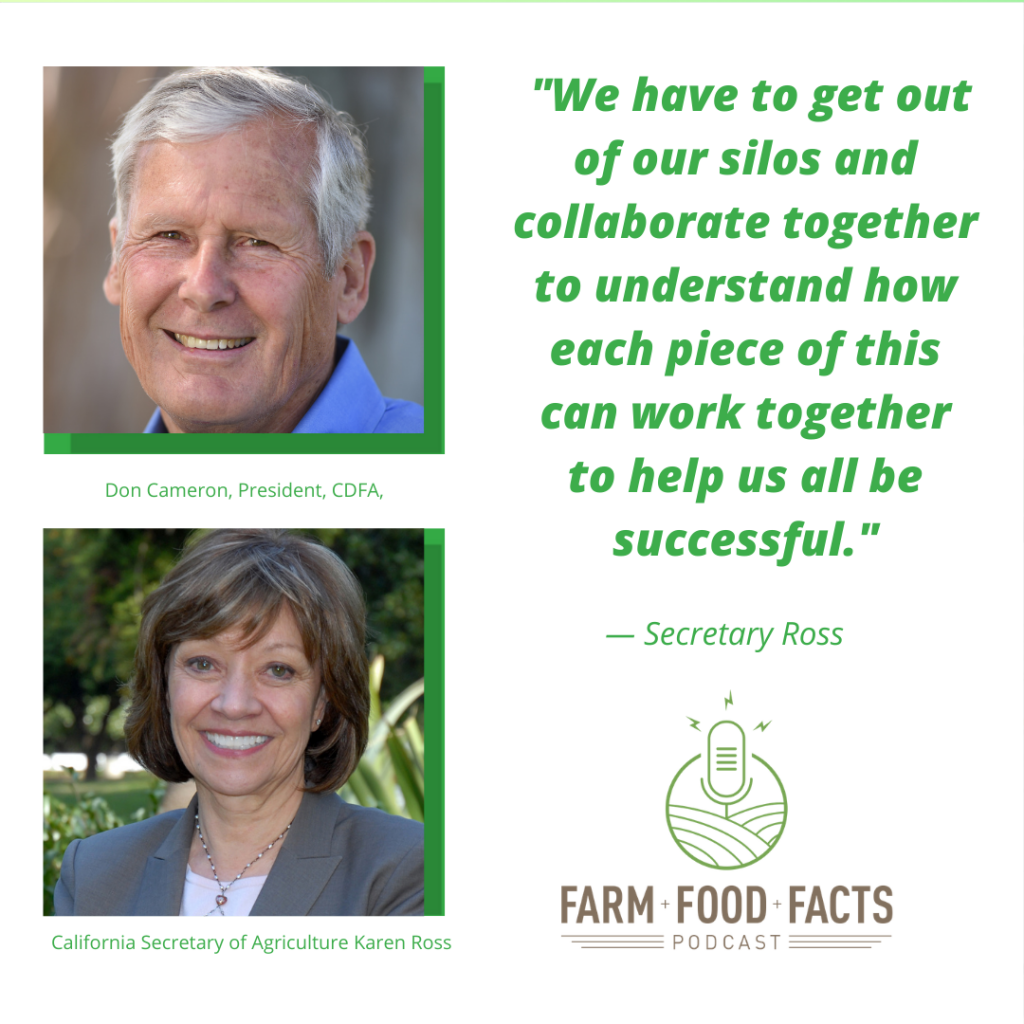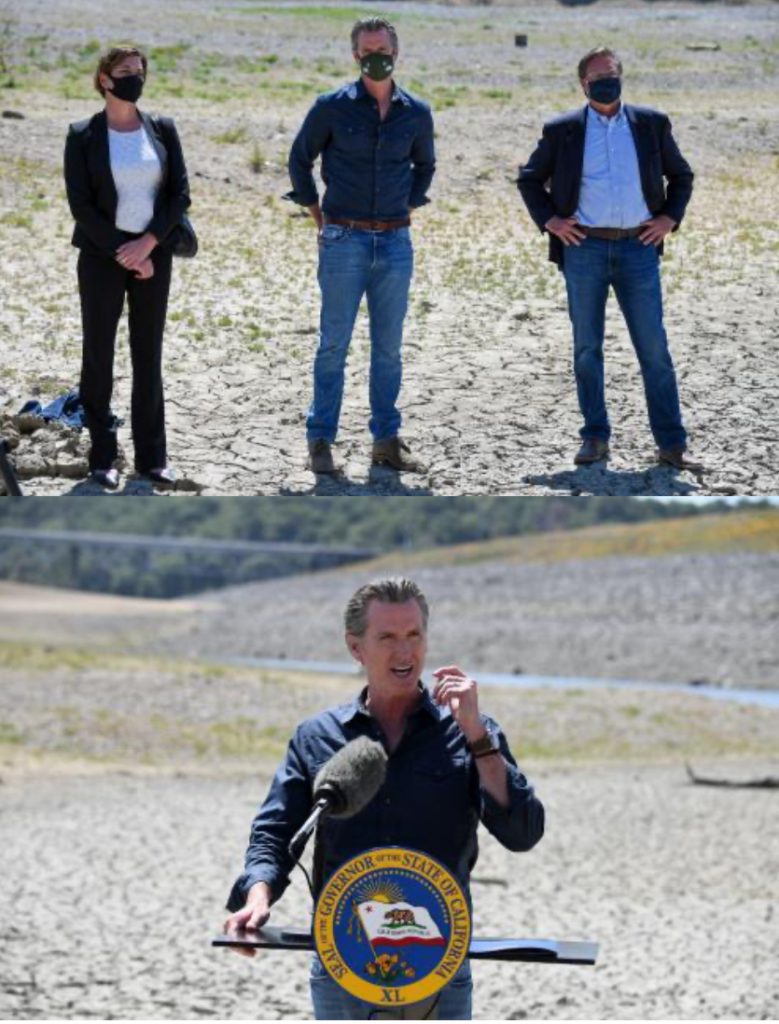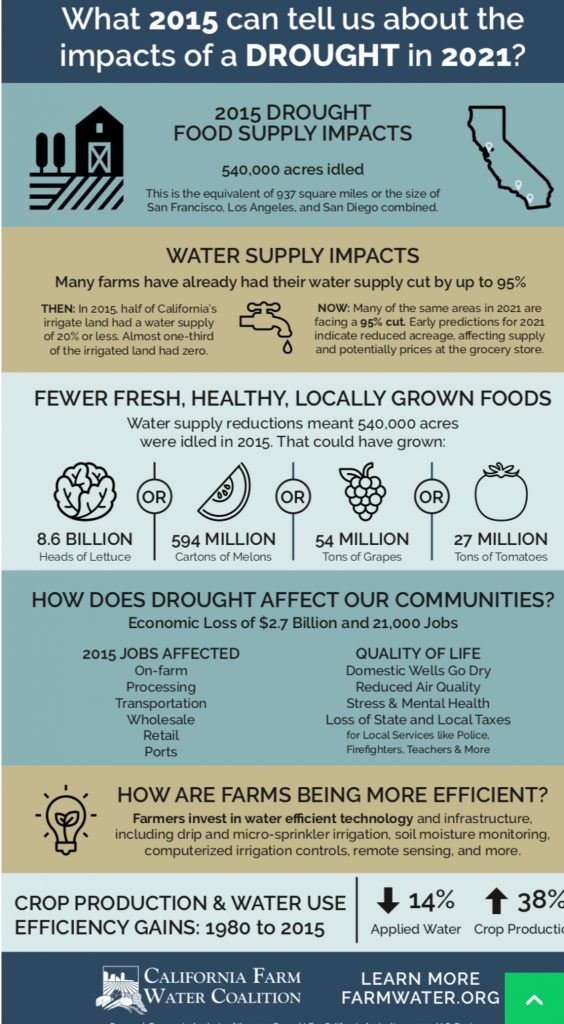-
Recent Posts
- Agritourism – California’s Pumpkin Patches: Hunter Farms
- CDFA Undersecretary Christine Birdsong counts down California CRUNCH!
- Celebrating Hispanic Heritage Month – California Farmer Mel Resendiz
- Secretary Ross on Water, Workforce, and the Future of California Agriculture — from AgNet West
- Agritourism – the Central Valley’s Best Pumpkin Patches
Recent Comments
- CA agriculture value surpasses $60B | Western Livestock Journal on Value of California Ag production tops $60 billion for first time
- Kathy de Contreras on CDFA IT department honored at “Best of California” awards
- El costo económico de las deportaciones masivas ya es visible en California - Espanol News on Nine California Counties Make Top-10 List for Ag Sales in the U.S.
- Deportations are taking a toll on California’s economy – and have only just begun – The News Beyond Detroit on Nine California Counties Make Top-10 List for Ag Sales in the U.S.
- Kenneth Cooper McNany on California Agricultural Heritage Club seeks nominations to honor pioneering farms and ranches more than 100 years old
Archives
- October 2025
- September 2025
- August 2025
- July 2025
- June 2025
- May 2025
- April 2025
- March 2025
- February 2025
- January 2025
- December 2024
- November 2024
- October 2024
- September 2024
- August 2024
- July 2024
- June 2024
- May 2024
- April 2024
- March 2024
- February 2024
- January 2024
- December 2023
- November 2023
- October 2023
- September 2023
- August 2023
- July 2023
- June 2023
- May 2023
- April 2023
- March 2023
- February 2023
- January 2023
- December 2022
- November 2022
- October 2022
- September 2022
- August 2022
- July 2022
- June 2022
- May 2022
- April 2022
- March 2022
- February 2022
- January 2022
- December 2021
- November 2021
- October 2021
- September 2021
- August 2021
- July 2021
- June 2021
- May 2021
- April 2021
- March 2021
- February 2021
- January 2021
- December 2020
- November 2020
- October 2020
- September 2020
- August 2020
- July 2020
- June 2020
- May 2020
- April 2020
- March 2020
- February 2020
- January 2020
- December 2019
- November 2019
- October 2019
- September 2019
- August 2019
- July 2019
- June 2019
- May 2019
- April 2019
- March 2019
- February 2019
- January 2019
- December 2018
- November 2018
- October 2018
- September 2018
- August 2018
- July 2018
- June 2018
- May 2018
- April 2018
- March 2018
- February 2018
- January 2018
- December 2017
- November 2017
- October 2017
- September 2017
- August 2017
- July 2017
- June 2017
- May 2017
- April 2017
- March 2017
- February 2017
- January 2017
- December 2016
- November 2016
- October 2016
- September 2016
- August 2016
- July 2016
- June 2016
- May 2016
- April 2016
- March 2016
- February 2016
- January 2016
- December 2015
- November 2015
- October 2015
- September 2015
- August 2015
- July 2015
- June 2015
- May 2015
- April 2015
- March 2015
- February 2015
- January 2015
- December 2014
- November 2014
- October 2014
- September 2014
- August 2014
- July 2014
- June 2014
- May 2014
- April 2014
- March 2014
- February 2014
- January 2014
- December 2013
- November 2013
- October 2013
- September 2013
- August 2013
- July 2013
- June 2013
- May 2013
- April 2013
- March 2013
- February 2013
- January 2013
- December 2012
- November 2012
- October 2012
- September 2012
- August 2012
- July 2012
- June 2012
- May 2012
- April 2012
- March 2012
- February 2012
- January 2012
- December 2011
- November 2011
- October 2011
- September 2011
- August 2011
- July 2011
- June 2011
Categories
- AG Vision
- Agricultural Education
- Agricultural Marketing
- Alternative Fuels
- Animal health
- Animal Welfare
- Asian Citrus Psyllid
- Biodiversity
- Border stations
- BSE
- Cannabis
- Cannella Panel
- Climate Change
- Climate Smart Agriculture
- Community-based Food System
- Conservation
- Dairy
- Drought
- Environment
- Fairs
- Farm Bill
- Farm Labor
- Farmers' Markets
- Fertilizer
- Food Access
- Food Safety
- Food Waste
- Glassy-winged Sharpshooter
- Growing California
- Healthy soils
- HLB
- Hydrogen
- Integrated Pest Management (IPM)
- Invasive Species
- Light Brown Apple Moth
- Livestock ID
- Measurement Standards
- Nutrition
- Organic agriculture
- Pierce's Disease
- Pollinators
- Specialty Crops
- State Board of Food and Agriculture
- Succession Planning
- Trade
- Uncategorized
Pages

Secretary Ross praises appointment of Jenny Lester Moffitt as USDA undersecretary
Statement from CDFA Secretary Karen Ross:
I am thrilled that someone of Jenny Lester Moffitt’s caliber has been selected by President Biden to serve as USDA Undersecretary for Marketing and Regulatory Programs.
In Jenny’s seven years at CDFA (as undersecretary and deputy secretary) she has shown herself to be a tireless advocate for agriculture and the people of California. I have deeply valued her counsel and her leadership. She is detail-oriented and a talented problem solver who brings all stakeholders together, and her experience as a farmer places her in a very strong position to understand the challenges and opportunities ahead. I have no doubt that she’ll show the same acumen and dedication on behalf of all Americans. We are a remarkable nation with the greatest agricultural story in world history, and we have people like Jenny—working in both the production and policy arenas—to thank for it.
Jenny Lester Moffitt is a trusted colleague and a good friend, and she will be missed here in California. But I am gratified that she will be serving a larger cause. She is a shining example of the next generation of agricultural leadership.
Posted in Uncategorized
2 Comments
Secretary Ross hosts state’s FFA officers at CDFA Headquarters
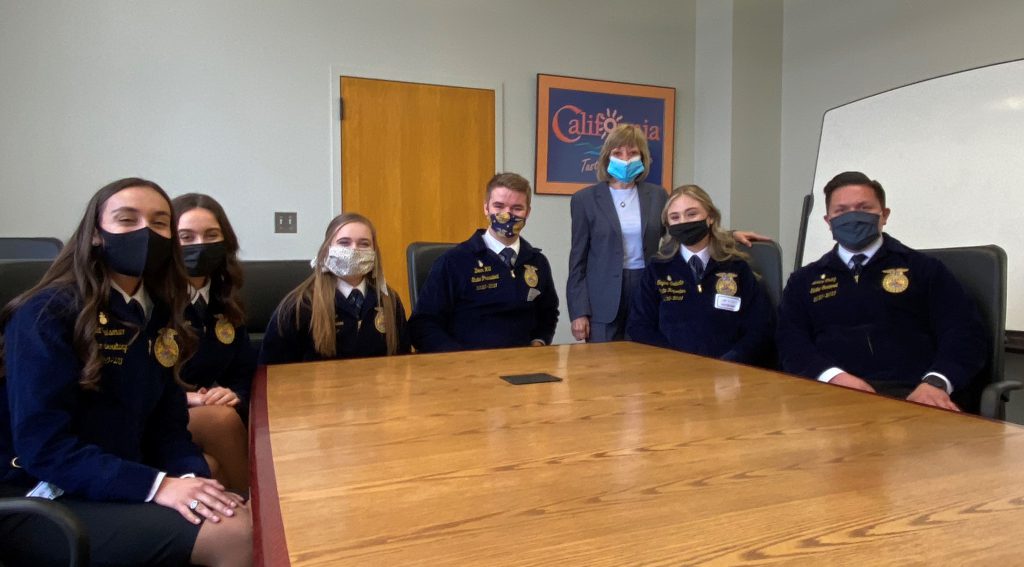
California Agriculture Secretary Karen Ross (standing) hosted the state’s FFA officers for their annual visit at CDFA Headquarters this afternoon. “It was great to be able to meet in person under the circumstances, and to hear how they’ve been so adaptable over the past year,” Secretary Ross said. “I’m looking forward to speaking at the convention in a few weeks.” Officers, from left: State Secretary Mia Arisman, State Treasurer Reese Gonsalves, State Vice President Emma Thorpe, State President Dean Hill, State Reporter Taylor Sollecito, and State Sentinel Maico Ortiz.
How dry is California? From the California Water Blog
By Jay Lund, UC Davis Professor of Civil and Environmental Engineering
California is in the second year of a drought. Governor Newsom (last) week made his first drought declaration.
Just how dry is this drought, so far? What are some likely implications? And what might State and local governments do about it?
How dry is it?
California Data Exchange Center has some excellent collections of water data: https://cdec.water.ca.gov/index.html
Precipitation – Northern California has received about 48% of average historical precipitation for this time of year. This is the 3rd driest water year on record, so far. Only 1924 and 1977 were drier in precipitation over the last 101 years. At this time of year, there will probably be little more precipitation until fall.
Snowpack – Statewide snowpack is about 30% of average for this date. Snowmelt will only help reservoir storage a little this year, but we will be glad to get any of it.
Temperatures – Temperatures have been warmer than historically, and we should watch how they develop over the year. In the 2012-2016 drought, warmer temperatures increased evaporation and dried soils much more quickly, further reducing streamflows, groundwater recharge, and stressing already-dry forests and aquatic ecosystems.
Surface water runoff – With warmer temperatures, this year might develop to rank drier in streamflow than precipitation, but it is too early to tell yet. Historically, precipitation this low would lead to Sacramento Valley annual streamflow of about 5-6 million acre-ft, compared to an average of about 18 million acre-ft., more than 2/3 loss of average surface water available.
Reservoir storage – Statewide, reservoirs are at about 74% of their long-term average. Last year was dry, and this year’s runoff hasn’t helped. The table below shows the major Sacramento Valley reservoirs are all quite low. Shasta, Oroville, Folsom, and New Bullards Bar are all lower today than they were on this date in any year of the 2012-2016 drought. This is especially concerning remembering that in both 2014 and 2015, Shasta ran out of cold water early, killing about 95% winter run juveniles, in 2014 suburban water utilities were quite worried for their Folsom supplies, and in 2015 levels were low enough to build a salinity barrier in the Delta. This drought seems to be off to a faster start than the 2012-2016 drought.
The Colorado River’s huge reservoirs are very low, 56% of average storage (only 41% of capacity). Colorado River drought plans are being triggered.
What are some likely implications?
The drought could end quickly, or it could go on for several more years. We will all hear informed (and uninformed) speculation on this. The informed speculation will be interesting, but perhaps not useful (such as the great El Nino distraction of the previous drought).
Cities seem mostly well prepared for this drought with stored surface and groundwater, and water banking and purchase agreements with farmers. They have continued drought preparation and water conservation efforts since the last drought. Conditions for cities might worsen with additional dry years, so more water purchases might be negotiated, given the surplus water conveyance capacities available this year. There will likely to be calls for more water conservation, mostly to help save water for potential additional dry years and to make some water available for other uses. Urban water use is only 20% of all water diversions, so conservation mostly tends to help cities bank water for later, but isn’t bad for others either.
Agriculture is a much greater water user and has less banked water, but still has access to considerable groundwater, which compensated for about 70% of lost irrigation water in the previous drought. Water markets and selective fallowing will further reduce the economic impacts of remaining agricultural shortages, as they did in the previous drought. Some farmers surprised by shortages in the 2012-2016 drought should be better prepared for this one, so far. Droughts these days are tougher on agriculture than cities, given their relative water demands and greater difficulties preparing irrigated agriculture for drought, especially with the growing share of more profitable, but hard-to-fallow, permanent crops. Farm worker unemployment is likely in regions with more fallowing.
Groundwater always becomes a problem during drought, with less surface water inflows and much more pumping, mostly for agriculture. Users of shallower rural wells suffer most directly from this. This drought will make implementing the State’s Sustainable Groundwater Management Act (SGMA) for ending groundwater overdraft much more difficult, but also provide opportunities for local Groundwater Sustainability Agencies and state regulatory agencies (DWR and SWRCB) to provide more forceful and specific guidance and motivations for implementing practical and effective local groundwater management (meaning more pumping cut-backs and less delusional recharge estimates).
Rural drinking water supplies always worsen with drought. This process will continue in every drought until SGMA is well-implemented and better support exists for rural water systems. A few rural water systems have been connected to more secure supplies since the last drought and quite a few deeper wells have been drilled. But we should expect to hear of rural community and household water supplies becoming scarce or dry – hopefully fewer than before.
The Delta is always dicey in drought. Lower freshwater flows greatly reduce water availability for exports and reduce water quality in various ways (not just salinity). These conditions are worse for native species and better for invasive species. It seems hard to predict exactly what will happen in the Delta’s ecosystem with drought, but it is usually not good. Although sometimes less bad than predicted, each drought seems to bring a step decline in native fishes which does not recover after the drought.
With such low reservoir levels, calls to reduce freshwater and environmental outflows from the Delta seem likely (rhetorical outrage machines will run overtime again.) Any reductions in Delta environmental outflows should probably be stored (not exported), to support environmental flows in future drought years if needed. And at the end of the drought, any remaining stored environmental water in reservoirs should be sold if it results in earlier resumption or increases in Delta exports – this has not been the case in previous droughts. Ecosystems should see some benefits from any necessary drought reductions in outflow that benefit other water users (Lund and Moyle 2015).
Ecosystems have the greatest difficulty preparing for drought, so they are the most vulnerable. We are the least organized to prepare ecosystems for drought, manage them in drought, and recover them after drought. In California’s highly variable climate, no wonder our ecosystems are declining.
Forest ecosystems will be stressed by drier and warmer-drier conditions, leading to greater spread of tree diseases and insect infestations. The previous drought killed over 100 million trees in California and increased catastrophic wildfires for several years after the drought, with wildfire damages and loss of life far greater than all traditional drought damages combined.
Native fish populations always seem to decline during drought, and fewer recover after the drought. This drought ratcheting effect on aquatic ecosystems has been part of this ecosystem’s ongoing declines.
Waterbirds need wetlands, which become scarcer during drought. Fortunately, waterbirds need less water than fish, and California’s system of national, state, NGO, and private refuges, duck clubs, and rice farming has become well organized over decades to support the Pacific Flyway. In recent droughts, these groups have collaborated, planned, and managed wetlands for migratory waterbirds quite effectively. They show what can be done when environmental interests are effectively organized and funded.
Should the Governor have already declared a statewide drought?
The Governor declared drought emergency conditions in two counties clearly hard hit by this drought and where an emergency declaration will facilitate tangible and effective state and local actions to reduce drought impacts. The Governor’s statement also moves forward a range of activities that prepare for additional State drought actions regionally and statewide, without yet making a statewide drought emergency declaration.
Droughts are long disasters, and they are mismanaged by both panic and complacency. The current measured incremental approach seems wise. It makes clear that State government is neither complacent nor panicked, and allows limited state agency resources to focus on and emphasize particularly urgent problems early while foreshadowing that other actions are being prepared, and that others should help prepare as well. It allows public and media attention to grow as drought conditions and needs worsen, and allows this attention to adapt as the situation evolves. If drought conditions become truly dire and widespread, draconian changes in public behavior will be needed. And to get such a public response, it will be necessary to maintain (and in these times build) public trust in water management institutions by acting in measured ways.
We all should prepare for a dry time, and for the likelihood of drier times. This could be a long haul, prepare earnestly, and don’t get exhausted too soon. And prepare to make one outcome of this drought be better preparation for the next drought.
Posted in Uncategorized
2 Comments
Secretary Ross, State Board of Food and Ag President Don Cameron join US Farmers and Ranchers in Action for podcast on the future of California Ag
Posted in Uncategorized
Leave a comment
Agriculture’s commitment to Earth Day – Op-ed in AgriPulse
By CDFA Secretary Karen Ross
As we observe Earth Day 2021 and look forward to a time in the not-so-distant future when we start to come together again after a very long year-plus apart, I want to take a moment to express my gratitude for everything that farmers and ranchers have done during this stressful period to further the causes of environmental stewardship and climate-smart agricultural practices. It’s important to understand that they have achieved this while never wavering from their essential purpose of providing food for a hungry world.
Throughout the COVID-19 crisis, California’s Climate Smart Agriculture programs have continued to draw extensive interest from producers. CDFA’s Healthy Soils Program, which incentivizes practices to increase soil sustainability by sequestering carbon, has received $50 million in appropriations, so far, and there is another $30 million proposed in Governor Newsom’s budget for 2021-2022. The funded projects to date are estimated to reduce greenhouse gases (GHGs) in the atmosphere by more than 112,000 metric tons per year. Co-benefits include increased water holding capacity for drought resilience, biodiversity enhancements, and improved nutrient cycling.
Dairy families are leaning-in on sustainability and methane reduction through our manure management programs, with the objectives of turning dairy waste streams into renewable energy and improving air and water quality. More than $318 million has been appropriated to these programs, so far, with a reduction of 2.3 million metric tons of GHGs per year – the equivalent of removing 495,000 cars from the road!
The State Water Efficiency and Enhancement Program (SWEEP) has invested $80 million to support farmers implementation of improved irrigation practices to conserve water and energy to reduce GHG emissions – more than 800,000 metric tons over a 10 year period along with annual water savings of 107,000 acre-feet, and all that also results in improved nutrient management! Recognizing the importance of this program, Governor Newsom’s budget has proposed $40 million for it.
Natural and working lands are key assets to helping California reach its climate goals. Governor Newsom underscored the state’s commitment with an executive order last fall calling for the development of innovative strategies for California lands to address climate change as well as protect and restore biodiversity and our ecosystems. He called on CDFA to work with agricultural stakeholders to identify farmer and rancher-led solutions. We followed that up with a series of public meetings to solicit ideas and the draft report summarizing those sessions is now out for public comment, with a deadline for comments of April 30, 2021. It is important that we listen to farmers and ranchers who are agents of change and managers of the biological system of farming as we focus on balanced policy, incentives, and technical assistance that best support and reward these land stewards for the common public good.
As we transition to a carbon-neutral economy and a more sustainable and resilient food and agriculture system, we must invest in more nature-based solutions to benefit Mother Earth. That’s why I was so excited for CDFA to join our colleagues from USDA Natural Resource Conservation Service and more than 20 other farm and non-governmental organizations in the recently announced California Pollinator Coalition to focus on increasing the value working lands provide to our environment. The member organizations represent the large majority of California’s crop and rangeland, and they’re pledging to increase habitat for pollinators on working lands. Achieving this goal will increase biodiversity and sequester more carbon in soil. California is home to more than 1,600 native bees and hundreds of other species of pollinators. Globally, pollinators provide service to more than 180,000 different plant species, more than 1,200 crops, and are responsible for producing an estimated one out of every three bites of food.
And that leads us to the whole point of observing Earth Day and beyond that, treating every day like Earth Day – we must take care of our planet so it may take care of us, and our farmers and ranchers can and will lead the way.
Posted in Uncategorized
Leave a comment
Earth Day video with CDFA secretary Karen Ross
In recognition of Earth Day today, CDFA secretary Karen Ross discusses Climate Smart Agriculture programs available to California farmers and ranchers.
Posted in Uncategorized
Leave a comment
Governor Newsom takes action to respond to drought conditions
With much of the West experiencing drought conditions and California squarely in a second consecutive dry year, Governor Gavin Newson today directed state agencies to take immediate action to bolster drought resilience and prepare for impacts on communities, businesses and ecosystems if dry conditions extend to a third year.
In addition, the Governor proclaimed a regional drought emergency for the Russian River watershed in Sonoma and Mendocino counties, where reservoirs are at record lows following two critically dry years and accelerated action may be needed to protect public health, safety and the environment.
“California is facing the familiar reality of drought conditions, and we know the importance of acting early to anticipate and mitigate the most severe impacts where possible,” Governor Newsom said. “Climate change is intensifying both the frequency and the severity of dry periods. This ‘new normal’ gives urgency to building drought resilience in regions across the state and preparing for what may be a prolonged drought at our doorstep.”
The text of today’s emergency proclamation can be found here.
With an extremely low Lake Mendocino as a backdrop, the Governor today announced that he is directing state agencies to work with regional and local governments – including groundwater sustainability agencies – to identify watersheds, communities, public water systems and ecosystems that may require coordinated state and local actions to address drought impacts and protect people, natural resources and economic activity.
To encourage Californians to reduce water use and conserve supplies in case drought conditions continue next year, the proclamation also directs state agencies to partner with local water suppliers to promote conservation tips and messages through the Save Our Water campaign. The campaign and website were critical resources for Californians during the 2012-2016 drought and remain a trusted information source on using water wisely.
The proclamation directs additional actions to coordinate with California Native American tribes; accelerate funding for water supply enhancement, conservation and species protection projects; work with counties to encourage and track reporting of household water shortages including dry residential wells; provide technical and financial assistance for water systems at risk of water shortages; support the agricultural economy and food security; and evaluate and take action to protect terrestrial and aquatic species.
To address acute drought impacts in the Russian River watershed, the proclamation directs the State Water Board to consider modifying requirements for reservoir releases or diversion limitations to ensure adequate supplies for critical purposes. The regional state of emergency also enables flexibilities in regulatory requirements and procurement processes to mitigate drought impacts.
Under the Governor’s direction, state agencies have been working together since November to prepare for continued dry conditions. The Governor recently formalized that coordination through the Drought Resilience Task Force, which includes the Natural Resources Agency, California Environmental Protection Agency, Department of Food and Agriculture, Department of Water Resources, Department of Fish and Wildlife, State Water Resources Control Board, Department of Finance, Governor’s Office of Emergency Services, California Health and Human Services Agency, California Public Utilities Commission and the Labor and Workforce Development Agency.
Other recent actions by state agencies to address dry conditions include:
- The state has launched a new drought preparedness website detailing current conditions, the state’s response and informational resources for the public.
- The State Water Board has identified water suppliers at extreme financial risk that may need additional support due to the combined impacts of COVID and drought.
- The Department of Water Resources (DWR) has updated its Dry Well website that tracks reports of water supply outages.
- DWR has drafted a Drought Contingency Plan that explains how it will manage the State Water Project in a manner that protects fish and wildlife.
- The State Water Board has issued letters to approximately 40,000 water right holders across the state, advising them to plan for potential shortages by closely managing water use.
- Last month, DWR released a report, prepared with extensive stakeholder involvement, that evaluates the water shortage risk of more than 4,000 small water providers.
- Informed by that report, this month the State Water Board completed its first-ever comprehensive look at California water systems that are struggling to provide safe drinking water to communities and how to help them. The assessment identifies both failing water systems and those at risk of failing, offering the most in-depth view of long-term drinking water safety the state has ever had.
- CDFA is coordinating closely with the USDA to provide aid to growers and ranchers in the Klamath Basin, and the Department of Fish and Wildlife is working with California Native American tribes and commercial and recreational salmon representatives to manage impacts to iconic salmon in the basin.
The 2012-2016 drought helped usher in some important water resilience policies that position the state to better handle another drought. These include:
- Enactment in 2014 of the Sustainable Groundwater Management Act to require and empower local agencies to bring overdrafted groundwater basins into sustainable conditions by 2042.
- Enactment of legislation to establish new standards for indoor, outdoor and industrial use of water.
- Funding for disadvantaged communities lacking access to safe drinking water through the Safe and Affordable Drinking Water Act.
- Increase in the frequency of water use reporting.
- Expanded state authority to order failing public water systems to consolidate with better-run systems.
- Tighter landscape efficiency standards for new developments.
Posted in Uncategorized
Leave a comment
USDA seeks comments on food system supply chains
USDA News Release
Agriculture Secretary Tom Vilsack today announced that the U.S. Department of Agriculture (USDA) is seeking comments on a Department-wide effort to improve and reimagine the supply chains for the production, processing and distribution of agricultural commodities and food products. USDA is taking this action in response to Executive Order 14017, America’s Supply Chains, signed by President Biden on Feb. 24, 2021. The request for comments is published today in the Federal Register and the comment period will close on May 21, 2021.
The comments received will help USDA assess the critical factors, risks, and strategies needed to support resilient, diverse, and secure supply chains and ensure U.S. economic prosperity, national security, and nutrition security for all Americans. Such supply chains are needed to address conditions that can reduce critical processing and infrastructure capacity and the availability and integrity of critical goods, products, and services. Identifying food system supply chain-bottlenecks and vulnerabilities also may provide valuable insights into the competitive and fair markets landscape, effects on local and regional producers and processors, and equitable access to food and economic opportunity across diverse communities. USDA will use the comments to prepare a report required by Executive Order 14017.
“We have an opportunity to take the lessons we’ve learned from the COVID-19 pandemic and apply those to transforming our nation’s food system from the inside out, including our supply chains,” said Vilsack. “USDA plans to tackle this supply chain assessment holistically – looking across a full range of risks and opportunities. From elevating the importance of local and regional food systems, to addressing the needs of socially disadvantaged and small to mid-size producers, to supporting sustainable practices to advance resilience and competitiveness, this top to bottom assessment will position USDA to make long-term, transformative changes for economic, national, and nutritional security.”
In addition to asking about the agricultural supply chain, USDA is interested in comments about how to target pandemic-related stimulus relief programs and spending authorized by Congress in the Consolidated Appropriations Act (CAA) and American Rescue Plan Act (ARPA) toward long term, systemic change that results in food supply chain resiliency. In particular, the request for comment seeks input on—
- bolstering local and regional food systems,
- developing new market opportunities (including for value-added agriculture and products),
- creating fairer and more competitive markets,
- meeting the needs of the agricultural workforce,
- supporting and promoting consumers’ nutrition security, particularly for low-income populations,
- addressing the needs of socially disadvantaged and small to mid-sized producers, and
- advancing efforts in other ways to transform the food system.
USDA is undertaking this effort to strengthen U.S. competitiveness with attention to our farmers, ranchers, producers, food processors, and other important links in the food supply chain. Under Secretary Vilsack’s leadership, USDA is helping to accelerate a transformation of our food system. Goals of this transformation include a fairer, more competitive, and transparent system where a greater share of the food dollar goes to those growing, harvesting, and preparing our food and one that promotes and strengthens the overall health and well-being of people, our land and water, and our economy. Growing consolidation in food and agriculture, the general health of our population, a growing climate crisis, and the need to ensure racial justice and equity are important factors to take into consideration as USDA looks at strengthening food and agricultural supply chains.
Posted in Uncategorized
Leave a comment
As dry conditions persist, drought impacts in 2015 provide insights — from the California Farm Water Coalition
Posted in Uncategorized
Leave a comment


